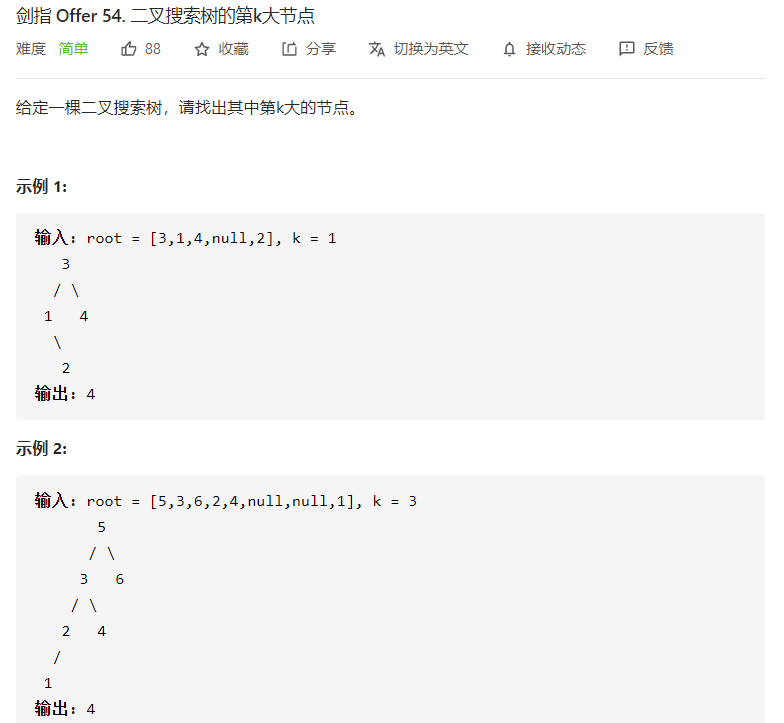
题目分析
二叉搜索树第k大的节点,这个题目还是非常简单的,除了常规解法还给小伙伴们推荐一个奇妙的方法,小伙伴先尝试如何求解。
递归
根据二叉搜索树的规律,使用中序遍历访问所有节点,将节点存放在容器中,然后取出容器倒数第k个值即可。
算法的**时间复杂度为$O(n)$,空间复杂度为$O(n)$**。
1 | #include<iostream> |
优化递归
本题还有一个更加巧妙的方法,我们要求第k大的元素,如果按照中序遍历的方法,需要遍历所有节点,如果k=1,我们也需要访问所有的节点,这样是不划算的。虽然最坏情况的时间复杂度都是$O(n)$,但是我们不希望这么做。
我们可以逆中序遍历进行访问,使用一个计数器cnt,访问一个节点cnt++,当cnt=k的时候停止递归。
算法的**时间复杂度为$O(n)$,空间复杂度为$O(n)$**。
1 | #include<iostream> |
迭代
中序遍历是可以通过迭代进行的,先访问左子树,在访问左子树之前将根节点加入容器,然后容器的尾部就是最左端的节点,取出该节点,访问其右子树,在访问右子树的过程中也是先访问其左子树。
在这里也是按照一个逆中序遍历的顺序进行的,代码也比较简单,小伙伴直接看代码即可。
算法的**时间复杂度为$O(n)$,空间复杂度为$O(n)$**。
1 | #include<iostream> |
刷题总结
中序遍历的递归求解是大家都比较清楚的,但是如何迭代求解是大多数人都没有了解过的,迭代求解思路奇妙,代码量相对递归求解较长,作为拓展知识。